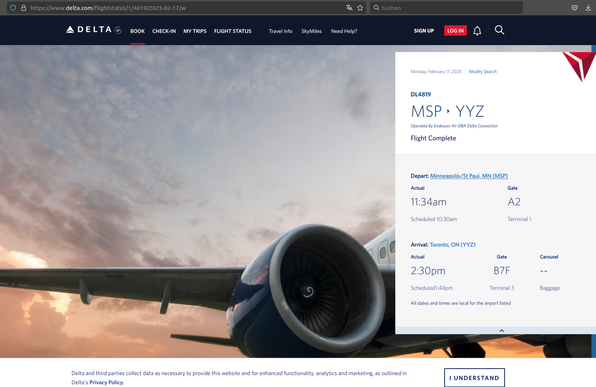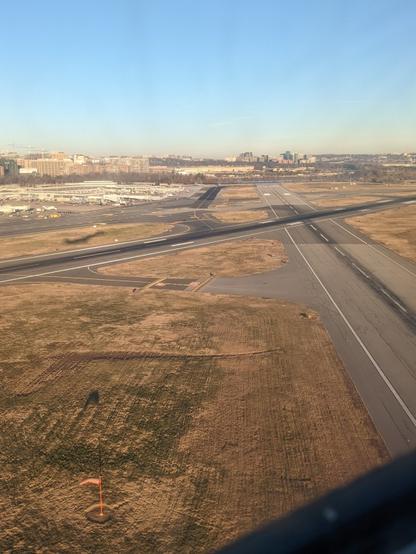Le NTSB (National Transportation Safety Board) organise un débat de 3 jours (30, 31 juillet, 1er août 2025) sur la collision en vol d’un hélicoptère militaire Sikorsky UH-60 Black Hawk et d’un avion de ligne ERJ 700 de PSA Airlines au-dessus du fleuve Potomac près de l’aéroport Ronald Reagan de Washington DC. L’accident s’est produit le 29 janvier 2025 et a causé la mort de 67 personnes. #CRASH #AA5342
#AA5342
Kristi & Brian said it best, as skaters we learn to express ourselves through artistry. Feeling every edge deeply today, watching,#LegacyOnIce, a tribute to those we lost on #AA5342, their families, and the responders who helped, Grateful to Kristi Yamaguchi, Brian Boitano, and all who are skating through it today ⛸️ 💔
https://www.usfigureskating.org/news/article/recognizing-28-lost-flight-5342
瘋狂機長 詹姆士|AA5342空難驚人進展,NTSB最新內幕曝光 https://youtu.be/3U1bWPsOkkw?si=KZsvbas4ArVKMg3S 來自 @youtube #AA5342 #NTSB #空難 #AmericanAirline #AviationAccidents
Just now:
Ummmm holy hell #Trump just doubled/tripled/quadrupled [I’ve lost count] down on saying #AirTrafficContollers were required to be “intellectually deficient” under #Biden #DEI agenda.
This muther f⁕⚠︎er!!!
argh!!!!!
#AA5342 #USpol #labor #law #ADA #trumpaganda #idiocracy #TrumpLies #FactCheck #bigotry #hate #discrimination #ableism #WhiteSupremacy #MaleSupremacy
Really solid video on the DC crash. Seems to indicate the military helicopter had exceeded it's flight ceiling.
The streak nobody wanted to see end
Doing anything with a 100 percent success rate is hard, and maintaining that perfect record for almost 16 years in a row is exponentially harder. And yet that’s what the U.S. airline industry had accomplished until Wednesday evening: year after year of having every scheduled takeoff conclude with the plane landing in one piece.
I wanted that streak to continue forever while realizing how improbable that would be. What I did not expect was that it would end a few miles from my house in a fireball over the Potomac River, just east of the airport I’ve probably flown in and out of more than any other in the world.
Wednesday night’s fatal mid-air collision between an American Airlines-marketed CRJ700 regional jet and a U.S. Army UH-60 Black Hawk helicopter, about 2,000 feet off Runway 33 at National Airport, happened close enough that I might have seen it firsthand had I been outside somewhere at the time.
Some of the thousands of Washingtonians and Arlingtonians who live in buildings overlooking DCA did witness the collision and will never be able to unsee it.
That is chilling to contemplate, though not nearly as upsetting as thinking about the 67 lives lost and how close the 64 passengers and crew on AA 5342 were to wheels down on that runway1.
The first fatal crash of a U.S. airline since February of 2009–and the first involving National Airport since the crash of Air Florida 90 just over 43 years ago, notwithstanding how busy National has become and how many helicopters whir around its airspace–is a horrible break with the culture of safety in U.S. commercial aviation.
People may assume that culture just happens, but it has taken an immense amount of sustained, selfless work. Airlines, airports, air traffic control and government regulators have combined to construct and operate a marvelously complicated machine that transports vast numbers of people–more than 819 million domestic passengers on U.S. carriers in 2023–and almost never fails in a way worse than a delayed or canceled flight.
Car and truck travel, meanwhile, resulted in nearly 41,000 deaths in 2023; the comparison with scheduled air travel is so unflattering that it might look fake. More than once, I’ve said to other people, only somewhat in jest, “If you want to live forever, get on an airplane.”
A critical part of aviation’s culture of safety is documenting what went wrong. Not as in President Trump’s ignorant, bigoted, and hateful press-conference rantings, but as in a National Transportation Safety Board report that will lay out in precise and agonizing detail what factors brought those two aircraft to their deadly intersection, so that everybody in the aviation industry will know what they can do to make sure those things never happen again.
- Via my habit of window-seat photography, it looks like I last had a flight use Runway 33 in November of 2023, departing Washington for LaGuardia. The picture above shows 33 as seen from a departure off Runway 4 in a United Airlines-marketed CRJ550–a conversion of the CRJ700 to add more first-class and Economy Plus seats. ↩︎
#AA #AA5342 #AmericanAirlines #AmericanEagle #Blackhawk #cultureOfSafety #DCA #H60 #NationalAirport #PSA #safestWayToTravel
Why Didn't Technology Prevent The Deadly Air Collision Over Washington?
31 January 2025
Chrystal Zhang, The Conversation
"TCAS is an aircraft safety system that monitors the airspace around a plane for other aircraft equipped with transponders. These are devices that listen for and respond to incoming electronic signals… #TCAS has limitations… inhibited at altitudes below roughly 300 metres."
https://www.sciencealert.com/why-didnt-technology-prevent-the-deadly-air-collision-over-washington
#Flight5342 #AA5342 #Potomac
"‘Heartbreaking’ search for those killed in DC air crash as army helicopter’s black box recovered" by @AssociatedPress - Remains of 41 recovered from the Potomac River so far. Next of kin notified for 18. There will be no passenger/crew names published until families are notified first. https://apnews.com/article/ronald-reagan-national-airport-crash-325edc6c0c2439dd6c1e73a81e382c0e #aa5342 #aviation #travel #avgeek
PSA / American Airlines #Flight5342 #AA5342 Potomac midair collision #NTSB media briefing: black boxes all recovered - #Bombardier #CVR and FDR, combined #CVFDR #datarecorder from #Sikorsky - various devices have been treated in alcohol, ionized water, vacuum oven.
https://www.youtube.com/live/eNEY7rBDlOg
Chief Warrant Officer Andrew Eaves, had 1,000 hours of flight time, which is considered experienced. The co-pilot, whose name is being withheld, had 500 hours, which is considered normal.
Officials also tell NPR that the #BlackHawk was supposed to be flying at a maximum of 200 feet, though sources say it was flying at least 100 feet higher. All requested anonymity given the sensitivity of the investigation.
Horrible:
#Disinformation on #socialmedia falsely claims she was a #transgender pilot from the Virginia National Guard named Jo Ellis. Ellis has posted a "proof of life" video on Facebook, denouncing the rumors & offering condolences to those killed in the crash.
#FactCheck #MAGAlies #bigotry #hate #AA5342 #Army #BlackHawk #helicopter
Army IDs 2 names of the #BlackHawk #helicopter crew in DC #crash withholds 1
The Govs of GA & MS have identified 2 of the BlackHawk helicopter crew killed in a collision w/ #AA5342 at #ReaganNationalAirport on Wed night. They are Chief Warrant Officer Andrew Eaves, & Staff Sgt Ryan O'Hara.
At the request of the family the #Army is not going to release the name of the female member of the 3-person helicopter crew.
[probably because #Trump would attack her as a DEI hire]
https://www.npr.org/2025/01/30/nx-s1-5281246/pentagon-jet-military-helicopter-collision
Emotivní vzkaz obětem na břehu řeky Potomac u Reaganova letiště. Do ní se po střetu zřítila vojenská helikoptéra s letadlem American Airlines. Víc dnes v Událostech. #aa5342
The latest from our team at The Air Current is an analysis of Trump's remarks on Wednesday's mid-air collision and how they could undermine the global standing of the #NTSB. Political interference harms rather than helps #aviation #safety investigations. No paywall! #AA5342 https://theaircurrent.com/aviation-safety/trump-dca-disaster-news-analysis-icao-annex-13/
Seems like a well informed look at the aviation aspects of the DC air collision.
Trump’s FAA Plan QUICKLY BACKFIRES in HIS FACE
https://www.youtube.com/watch?v=_8vkfhPCjC0 #Trump #ElonMusk #FAA #AA5342
a skater on that #AA5342 was a prodigy and posted progress videos on reddit...
the subreddit joked that he'd be the first redditor to make it to the olympics.


